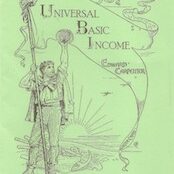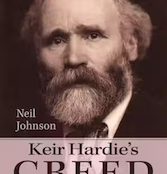For all its fascinating detail and insights, IAN BULLOCK wants more from Gidon Cohen’s The Failure of a Dream
This account of the ILP in the 1930s begins with an outline of the party’s history during the seven years between leaving the Labour Party and the outbreak of war. The second chapter looks at the disaffiliation itself and the remaining chapters – apart from the conclusion – are thematic, covering aspects ranging from membership and organisation, relationships with the Communist and Labour parties, and the ILP’s international involvements.
This structure has both merits and drawbacks. On the positive side we get to view the ILP from a number of different angles and in varying perspectives, although, inevitably, given the short period the book covers, there is a lot of repetition as the same events, groupings and individuals turning up in different contexts.
The ILP’s crucial role in the foundation of the Labour Party meant that, until the end of the First World War, it functioned as the main vehicle for individuals to participate in the larger party, locally and nationally. However, the introduction of Constituency Labour Parties after the war presented the ILP with a dilemma – where should it be going and what should its relationship be with the larger entity?
Cohen claims the ILP in the 1920s, under the chairmanship of Clifford Allen, was developing into a ‘think tank’, but it was surely much more than this. For a start, it was much bigger than most organisations designated in this way today. At the time of its disaffiliation in 1932, it was more than five times the size of the Communist Party of Great Britain (CPGB), as we are reminded in the very first sentence of the Introduction.
Cohen rejects the view that disaffiliation was simply an act of ‘insanity’, although he is clear that most ILPers preferred to remain affiliated and the majority who supported disaffiliation did so with the greatest reluctance. As late as the beginning of 1932, the year of the breach with Labour, six of the nine ILP Divisions, accounting for about 80 per cent of its members, voted to remain affiliated to Labour. Yet, quite shortly afterwards, the decision to disaffiliate was taken, with the result that about a third of members departed.
So, why, if there was so much reluctance to part company with Labour, and so much opposition to doing so, did the delegates to the crucial ILP conference resolve to leave the Labour Party?
Conflicting orders
There were groupings, notably the Revolutionary Policy Committee formed the previous year, which had their own reasons for supporting disaffiliation, but Cohen is clear that the key feature was the conflict over the standing orders of the Parliamentary Labour Party. This went back to 1929 after a period when the more militant ILP MPs, notably James Maxton, had been fierce left-wing critics of the Labour leadership and, from the latter’s point of view, had signally failed to display the loyalty it expected from its parliamentary supporters.
The parties then took incompatible decisions. The ILP resolved that all its MPs and candidates should formally undertake to support the policies determined by its conferences, while the PLP introduced new standing orders which precluded MPs from voting against its decisions. This might seem an issue of concern mainly to the ILP Parliamentary Group, but when Labour failed to endorse ILP candidates at by-elections and, subsequently, at the general election of 1931 – 19 of them at the general election – there was widespread resentment and anger among ILP supporters.
Nevertheless, at the regular ILP annual conference in 1932 delegates voted against immediate disaffiliation and resolved by a very large majority to re-open negotiations with Labour on a compromise solution. This was, says Cohen, ‘a victory for the politics of Micawber’. Labour had already made it crystal clear that it was not prepared to give any ground and this hope that something would turn up to rescue the ILP from its dilemma was doomed to failure. A special conference in July 1932 bowed to the inevitable and took the decision to disaffiliate.
It would have been interesting to hear more about how the decision to call the ‘disaffiliation conference’ was made and to better understand how the Labour Party could contemplate the loss of the ILP so calmly, especially so soon after the MacDonald defection and the disastrous 1931 election when the number of Labour MPs reduced from 287 in 1929 to 46.
One outspoken supporter of the ILP line was the veteran ILPer, former MP and minister, Fred Jowett. For him, at issue was the electorate’s right to elect MPs who would honour pledges made during the campaign, and in the case of ILP MPs the relevant policies were those determined by the ILP’s conference.
Again, it would have been very interesting if Cohen had explored these arguments further. Jowett had a long record as a critic of what passed for representative government, going back to well before the Great War. He had doggedly pursued the celebrated ‘Bradford resolution’ for years and continued to advocate replacing cabinet government by a committee system – although he had served in MacDonald’s first cabinet. It is clear from Fenner Brockway’s biography that Jowett’s position on the PLP’s standing orders debate was closely related to his more general stance on democracy. How far these concerns were reflected in ILP attitudes more generally at the time of disaffiliation is another area that could have been examined in more detail.
Loss of members
The book presents a more nuanced picture of the decrease in ILP membership than the usual account of inevitable and precipitate decline. Significant fluctuations in membership were new neither to the ILP nor to other left-wing parties – the CPGB, for example, suffered much greater loss in percentage terms during the same 10-month period immediately following the ILP’s disaffiliation.
More worrying for those ILPers who remained was that membership continued to fall by slightly larger proportions in the following two years. As a result of serious declines in old strongholds, such as Lancashire, Yorkshire and Wales, less ‘traditional’ areas, where membership decline had been slower, came to carry greater weight within the organisation. The picture was not one of universal decline, however: some areas saw substantial growth in membership and branches, and the ILP achieved some modest election successes in some of its strongholds.
It also became more consciously orientated towards the trade union movement, although its impact here was patchy and modest, as was its appeal among women. One of the features of the early ILP, back in the 1890s and 1900s, was its far less ‘masculine’ tone than its rival socialist organisations, notably the Social Democratic Federation (SDF). At the time, women played a relatively large part in the organisation at all levels and in a variety of roles. Katherine Bruce Glasier, for example, took over the editorship of the Labour Leader for several key years either side of the end of the Great War.
However, in the post-disaffiliation period only three women were on the National Administrative Council (NAC), two of whom, Dorothy Jewson and Jennie Lee, lasted only until 1934 and 1935 respectively, leaving Kate Spurell as the sole female member. Separate representation for women, already declining in previous years, was brought to an end with the support of the ILP’s ‘revolutionary’ element soon after the breach with Labour.
This ‘revolutionary’ wing also had an impact on the organisation of the party. Since its inception, the ILP’s ruling body (between national conferences) had been the NAC. The name was deliberately chosen to suggest a body that would not behave in the authoritarian way attributed to many, if not all, executive committees. This was very much in accord with the times: there was much debate, for example, about whether the ILP should have a ‘president’; and the Clarion, weekly rival of Labour Leader, leapt on any pretensions to ‘leadership’ among notables in the party and was prone to spot the slightest sign of incipient bureaucracy.
But in the 1930s sterner attitudes came to the fore. In 1934, against the objection of many, notably Jowett, the ILP adopted its own version of ‘democratic centralism’ creating not only of an executive committee but also the rather sinister sounding ‘inner executive’.
The latter was supposed to enable the party to function ‘underground’ should the ILP be made illegal, but by 1935 it consisted of three MPs – Maxton, Campbell Stephen and John McGovern – who met in a committee room of the House of Commons (rather than the Doge’s Palace as the name might have led one to anticipate). It became a controversial force, and was accused of dictatorship, especially in relation to the ‘Abyssinian’ crisis. I would have welcomed more from Cohen about the arguments on both sides of the democratic centralism debate, and subsequent criticisms and defences of the new structure.
Distinct groupings
The key chapter for explaining ‘the failure of the dream’ is ‘Divided We Fall’. It is always difficult to draw a line between constructive critical debate and destructive factionalism, a point exemplified by what took place in the ILP during the years in question. Apart from those wishing to remain affiliated to the Labour Party, who helped form the Socialist League, there were at least three distinct groupings within the ILP pulling in very different directions.
The Revolutionary Policy Committee’s (RPC) notion of a ‘revolutionary’ policy did not correspond to the interpretation of other would-be revolutionaries in the party. Among other things, it stood for closer co-operation with the Communists, nationally and internationally, an approach which seemed to flourish for a couple of years before events in Spain and, particularly, Barcelona put the two organisations at loggerheads. Soon afterwards, the RPC left en masse to join the Communist Party.
In the meantime, unimpressed by the progress being made by the RPC, the CP infiltrated the ILP’s youth movement and the ILP itself. Its central committee set up a Committee for Affiliation to the Comintern within the ILP. Those who had been ILP members in 1920 and 1921 must have recalled the attempts of the ‘Left-Wing of the ILP’ to secure the party’s affiliation to the Third International. This time, however, the ILP also attracted the attentions of Trotskyists in the shape of the ‘Marxist Group’.
These moves were opposed by a ‘Unity Group’ whose title was not intended to be ironic even though most of its members left to form the Independent Socialist Party in 1934. The group was committed to ‘ethical socialism’ but again it would have been good if this had been explored more fully by Cohen.
He does supply some interesting examples of the ILP’s social activities though. To some extent, by the 1930s the ILP had become a sort of residual legatee of the pre-Leninist radical left, including elements of the Clarion movement, the Guild Socialists, the syndicalists and perhaps even the old SDF, alongside the ILP’s ‘traditional’ features. Its opponents within the party represented more recent trends from other, wider, contexts, which we are now more familiar with.
There is a great deal of fascinating detail and many helpful insights in this book. But I wish important elements, notably the move towards democratic centralism and the nature of ethical socialism, had been unpacked and explored a little more.
—-
Ian Bullock is a Visiting Research Fellow in the History department of the University of Sussex. He is co-author, with Logie Barrow, of Democratic Ideas and the British Labour Movement, 1880-1914 (CUP) and author of The Myth of Soviet Democracy and the British Left. He co-edited Sylvia Pankhurst: From artist to anti-fascist (Macmillan) with Richard Pankhurst, and is working on a project about the ILP between the wars.
The Failure of a Dream: The Independent Labour Party from Disaffiliation to World War II by Gidon Cohen, is published by I.B. Tauris, 2007. 262pp.
To read Christopher Hall’s review, click here.



5 November 2013
[…] Also see Ian Bullock’s profile of Fred Jowett here, plus ‘A Living Wage: A Policy with History’, and ‘Disaffiliation and its Aftermath’. […]
26 March 2010
Thanks for your comment, but it wasn’t actually me who made the ‘spot on’ criticisms – it was Ian Bullock. I merely posted the article. Apologies for any confusion.
23 March 2010
I read the book in question recently to prepare a presentation on revolutionary youth in the 1930s.. and found that Matthew brown’s criticisms are pretty spot on. There seems to be great gaps where many of the ideas and arguments should be.
I see the split as being one rather blundered into- what should have been an attempt to use the ILPs strength to gain further influence within the LP, became instead an ultimatum and then an established fact.
attempts at reorientation and a reunification of the left were treated with contempt by the madness of third period communism.
Forced by circumstance to an independent existence the party had to develop a strategy and philosophy independent of both labour reformism and leninist ‘orthodoxy’, and to do so in double quick time.
I would have liked a lot more on the influence of the “London bureau” parties on ILP thinking, and how far far its attempts to develop a revolutionary socialism succeeded.
4 January 2010
[…] Read another review of this book here. […]